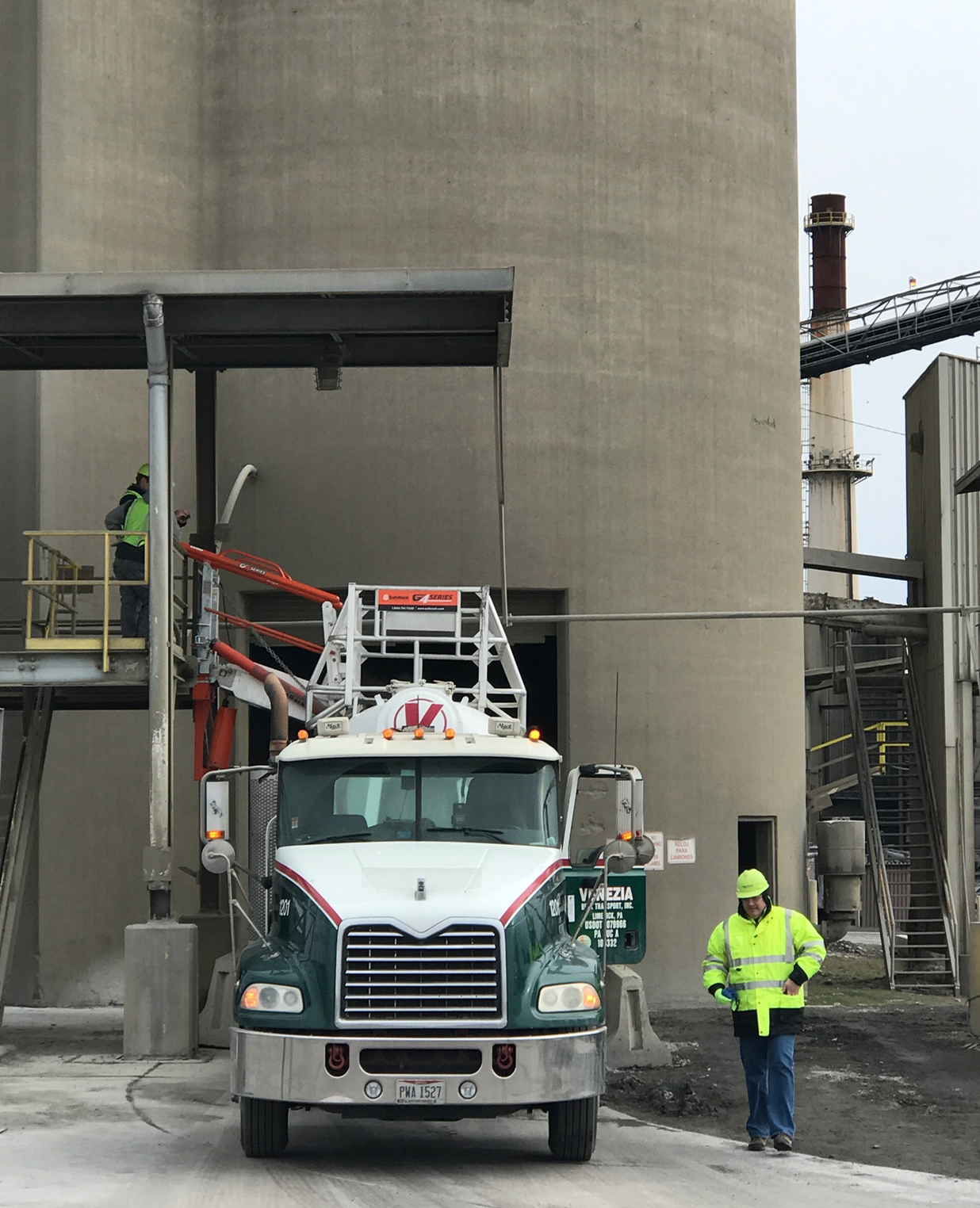When most people think of gangways, they think of the elevated walkways that allow passengers to board and disembark vessels such as barges and cargo ships. However, gangways are also commonly used for truck and railcar loading and unloading goods like petroleum and bulk chemical industries.
The cement industry continues to face challenges in loading and unloading. Cement companies must find ways to load and unload their dry bulk product quickly and safely to be as efficient as possible. Unfortunately, this is not always easy to do. Let’s look at how the cement industry benefits from gangway loading systems.
One of the main challenges is providing safe access and fall protection for employees, and another challenge is ensuring that the process is quick and efficient. While there are no easy solutions to these challenges, cement companies continue to look for ways to improve their loading and unloading processes.
The dry bulk industry’s process for loading bulk tanker trucks requires three stops. Unlike other industries where only one visit is needed, this three-stop process adds additional risk to the company, site, and, most importantly, operators performing the task. Dry bulk truck loading is a common practice in many industries, including the cement industry and other silo-based activities:
- The truck stops at the first station, where the opening or hatches on the truck’s roof are opened. The truck driver often completes this task in the cement business.
- The vehicle enters the silo bay, where the chute is positioned inside or above the hatch when loading.
- After the truck has been loaded, it is moved to a different location where the top hatches are shut.
At most silo dry bulk operations, like in the cement industry, their process is very similar when loading dry bulk trucks. The dry bulk truck pulls up to an open area next to the dry bulk storage unit, and an operator opens a chute from the dry bulk storage unit that leads into the dry bulk truck. The operator then uses a hose to direct the dry bulk product into the dry bulk truck. The dry bulk truck has a capacity of about 15 to 28 tons, and once it is full, the operator closes the chute and hose and moves on to the next dry bulk truck. This process is completed three times before the dry bulk trucks are full and ready to be transported to their destination. Although this process is similar among different types of dry bulk operations, some variations depend on the type of product being loaded. For example, fly ash and kiln dust are transported in dry bulk trucks in the cement industry. These products are collected from different plant areas and combined in a single storage unit before being loaded into dry bulk trucks.
Cement operations frequently involve loading and unloading materials from high places. This work can be extremely dangerous, as there is a risk of falling if proper safety precautions are not in place. One way to ensure the safety of workers is to install a gangway system complete with safety cages. Gangways provide a safe, enclosed walkway for workers to use when moving between different levels. The safety cages surround the gangway and prevent workers from falling off the edge.
Aside from workplace falls, a dry bulk trailer is a semi-trailer designed for hauling dry bulk materials such as aggregates, cement, and dry chemicals. As its name implies, dry bulk trailers are distinguished from other types of trucks by their lack of internals, such as tanks or compartments. Instead, dry bulk trailers rely on the hauled material to maintain its shape, accomplished by loading the material into a series of cone-shaped hoppers at the bottom of the trailer. The hoppers funnel the material towards the trailer’s center, which is discharged through a set of utility holes. Dry bulk trailers come in a variety of sizes, with the most common being 28 to 45 feet long. They can also be equipped with a variety of features, such as air ride suspension and tarp systems.
Workplace safety is a critical issue in the cement industry. Because cement production relies heavily on trailer trucks, workers are exposed to various hazards. Truck spotting is one of the biggest concerns, as workers must often guide the trucks into loading and unloading areas. This scenario can be very dangerous, where a risk of being struck by a vehicle or caught between the trailer and the loading dock. Fall injuries are also common in the cement industry, as workers are often required to work at heights. These risks can be minimized by following proper safety procedures and using appropriate equipment.
By taking note of safety protocols around the cement loading terminal, these facilities hope to improve efficiency and safety in their operations by:
– Enhancing loading terminal ergonomics for a safer workplace.
– Positive locking system to protect drivers and operators automatically.
– Plug-and-play installation for fast and easy setup.
– Consultative approach to improve the system that’s right for each customer.
– Expedited delivery means quick ordering and in-stock parts.
It’s no wonder why Holcim chose Saferack as their supplier of choice when it comes to trailer loading gangways, platforms, and safety-related loading equipment for the entire US marketplace. If there is a company that understands this industry better than anyone else — it’s Holcim, one of the largest cement manufacturers in the world. Holcim has been using Saferack products for years to help keep their workers safe, and they trust the quality and reliability of our products. No doubt, we have a proven track record of helping companies like Holcim keep their workers safe. If you’re looking for a company you can trust to keep your workers safe, look no further than Saferack. We have the experience and expertise to help you protect your most valuable asset – your people.

























